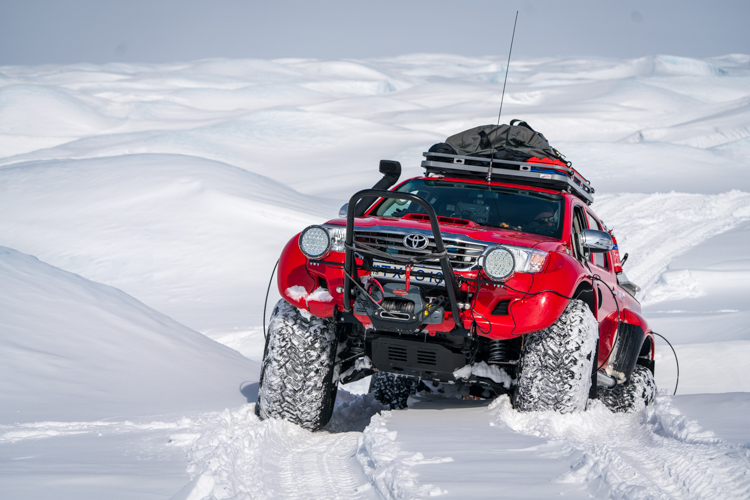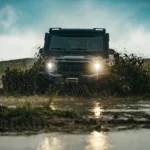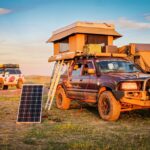Winter overlanding offers a unique and rewarding experience for adventurous travelers. The quiet, snow-covered landscapes, crisp air, and solitude create an entirely different dimension of exploration compared to warmer months. However, winter conditions also pose significant challenges that require careful planning, specialized gear, and safety awareness.
Understanding how to prepare for cold weather overlanding is crucial to ensure both safety and enjoyment. From vehicle maintenance and snow driving techniques to camping gear and clothing, this guide provides everything an overlander needs to venture into winter landscapes confidently.
Whether you are a beginner or an experienced overlander, these insights will help you navigate snow-covered trails, stay warm, and make the most of your winter adventures.
Understanding Winter Overlanding
Winter overlanding is not just about traveling during colder months—it is about embracing the challenges and planning for them. Unlike traditional summer trips, winter conditions introduce snow, ice, shorter daylight hours, and extreme temperatures that can affect both the vehicle and the traveler.
Why Winter Overlanding?
- Unique Experiences: Snow-covered trails, frozen lakes, and quiet wilderness areas provide unparalleled scenery.
- Reduced Crowds: Popular overlanding destinations are often less crowded in winter, offering solitude and freedom.
- Skill Development: Winter trips enhance your driving, camping, and survival skills.
Secondary keywords: cold weather overlanding, winter camping overland.
Preparing Your Vehicle for Winter Conditions
A well-prepared vehicle is the foundation of safe winter overlanding. Cold temperatures, ice, and snow can affect performance, so preventive maintenance is critical.
Vehicle Maintenance for Cold Weather
- Fluids: Use winter-grade oil and antifreeze. Check brake fluid and windshield washer fluids suitable for low temperatures.
- Battery Care: Cold weather reduces battery capacity. Ensure it is fully charged and consider a battery heater or jumper cables.
- Tire Inspection: Winter or all-terrain tires with sufficient tread are essential. Keep chains or traction mats on hand.
- Heating Systems: Test the vehicle’s heating system to ensure cabin and engine heat is reliable.
Essential Vehicle Gear
- Recovery Kits: Include tow straps, traction boards, and a snow shovel.
- Lighting: Ensure headlights and auxiliary lights are bright enough for snowy conditions.
- Tools: Carry a multi-tool, spare parts, tire repair kits, and jack.
Secondary keyword: winter overland gear.
Safety Checks Before Departure
- Plan routes with weather and daylight in mind.
- Share travel plans with someone for emergency purposes.
- Carry an emergency communication device such as a satellite phone or GPS beacon.
Staying Warm While Overlanding in Winter
Maintaining warmth is critical for both comfort and safety during winter overlanding trips. Hypothermia and frostbite are real risks, and proper clothing, sleeping systems, and heating solutions are essential.
Clothing and Layering
- Base Layer: Moisture-wicking thermal underwear.
- Mid Layer: Insulating fleece or down jackets.
- Outer Layer: Waterproof and windproof shell to block snow and wind.
- Accessories: Insulated gloves, warm hats, scarves, and waterproof boots.
Layering allows you to adjust your insulation as activity level and weather conditions change.
Sleeping Systems
- Sleeping Bags: Choose bags rated for sub-zero temperatures.
- Sleeping Pads: Provide insulation from the cold ground.
- Rooftop Tents: Elevated sleeping arrangements reduce exposure to snow and moisture. Check our guide on rooftop tents here.
Heating Solutions
- Portable Heaters: Small propane or electric heaters designed for tents or vehicles.
- Heat Packs: Chemical or battery-powered heat packs for hands and feet.
- Insulation Tips: Close tent vents at night, use thermal blankets, and wear dry clothing to retain body heat.
Secondary keyword: staying warm overlanding.
Winter Camping Tips for Overlanders
Camping in winter requires additional preparation to ensure safety and comfort.
Selecting a Campsite in Snow
- Avoid avalanche-prone slopes and areas exposed to strong winds.
- Choose sites that are level, accessible, and offer some natural shelter.
- Check for nearby water sources but avoid low-lying areas prone to flooding.
Tent Setup and Shelter
- Rooftop Tents vs Ground Tents: Rooftop tents are elevated and reduce contact with snow, while ground tents require proper insulation and snow anchors.
- Anchoring Tips: Use snow stakes or bury traditional stakes horizontally in the snow.
- Insulation: Use extra ground pads, reflective liners, and thermal blankets inside tents.
Internal link: Rooftop Tent Guide
Cooking and Food Management
- Use fuel-efficient stoves that perform well in cold temperatures.
- Insulated cookware retains heat and reduces cooking time.
- Store perishable items in insulated containers or near the vehicle’s engine heat.
Snow Driving Tips for Overlanders
Driving in snow requires caution, skill, and the right techniques.
Key Driving Techniques
- Maintain Traction: Drive slowly and smoothly; avoid sudden acceleration or braking.
- Use 4×4 Modes: Engage four-wheel drive when needed to improve traction.
- Tire Pressure Adjustment: Slightly lower tire pressure can improve grip on snow.
- Obstacle Navigation: Plan routes carefully to avoid deep snow, ice patches, and hidden hazards.
Secondary keyword: snow driving tips overland.
Vehicle Recovery in Snow
- Keep tow straps, winches, and traction boards readily accessible.
- Know how to safely dig out snow around tires.
- Avoid overexerting the vehicle; know your limits.
Safety and Emergency Planning
Winter overlanding presents unique hazards that require proactive planning.
Weather Monitoring and Alerts
- Use weather apps and radios to monitor changing conditions.
- Stay aware of snowstorm warnings and avalanche advisories.
First Aid and Emergency Supplies
- Carry frostbite prevention items and hypothermia treatment guides.
- Include a well-stocked first aid kit with thermal blankets and medications.
Communication and Navigation
- GPS devices with offline maps are crucial in areas with no cellular service.
- Satellite communication devices provide backup for emergencies.
FAQs About Winter Overlanding
1. What are the essential gear items for winter overlanding?
Essential items include winter-rated sleeping bags, insulated clothing, snow recovery gear, portable stoves, and rooftop tents.
2. How can I stay warm while camping in snow?
Layer clothing, use insulated sleeping systems, and employ heat packs or portable heaters.
3. What vehicle modifications are necessary for cold weather?
Winter tires, proper fluids, battery heaters, and recovery gear are recommended.
4. Can I overland in extreme winter conditions safely?
Yes, with proper preparation, skill, and emergency planning.
5. Are rooftop tents suitable for winter camping?
Yes, they elevate you above snow and moisture, improving insulation and comfort. See rooftop tent options.
Conclusion & Call to Action
Winter overlanding is a rewarding adventure for those willing to prepare adequately. With the right vehicle maintenance, clothing, sleeping systems, and safety planning, you can enjoy the serene beauty of snow-covered landscapes while staying warm and secure.
Invest in reliable winter overland gear, plan routes carefully, and practice snow driving techniques. Explore our Rooftop Tent Guide to enhance your winter camping experience. Embrace the challenge and make your next winter overlanding adventure both safe and unforgettable.








